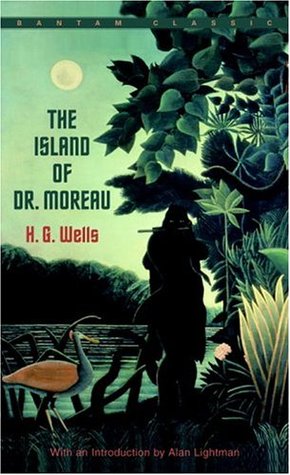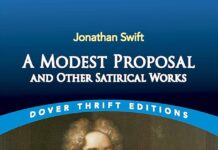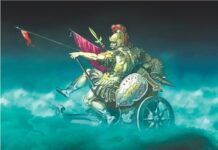In the uneasy twilight where science blurs into the macabre, H.G. Wells’ The island of Dr. Moreau invites readers to confront unsettling questions about morality, identity, and the boundaries of human ambition. This enduring work, shimmering at the crossroads of gothic horror and speculative fiction, probes the ethical dilemmas that arise when man attempts to play creator over nature itself. In this review, we delve into Wells’ provocative narrative, examining how the novel’s haunting exploration of monstrosity continues to challenge and resonate in our modern age.
Unveiling the Ethical Dilemmas Embedded in The Island of Dr Moreau and Their Relevance to Modern Scientific Debates
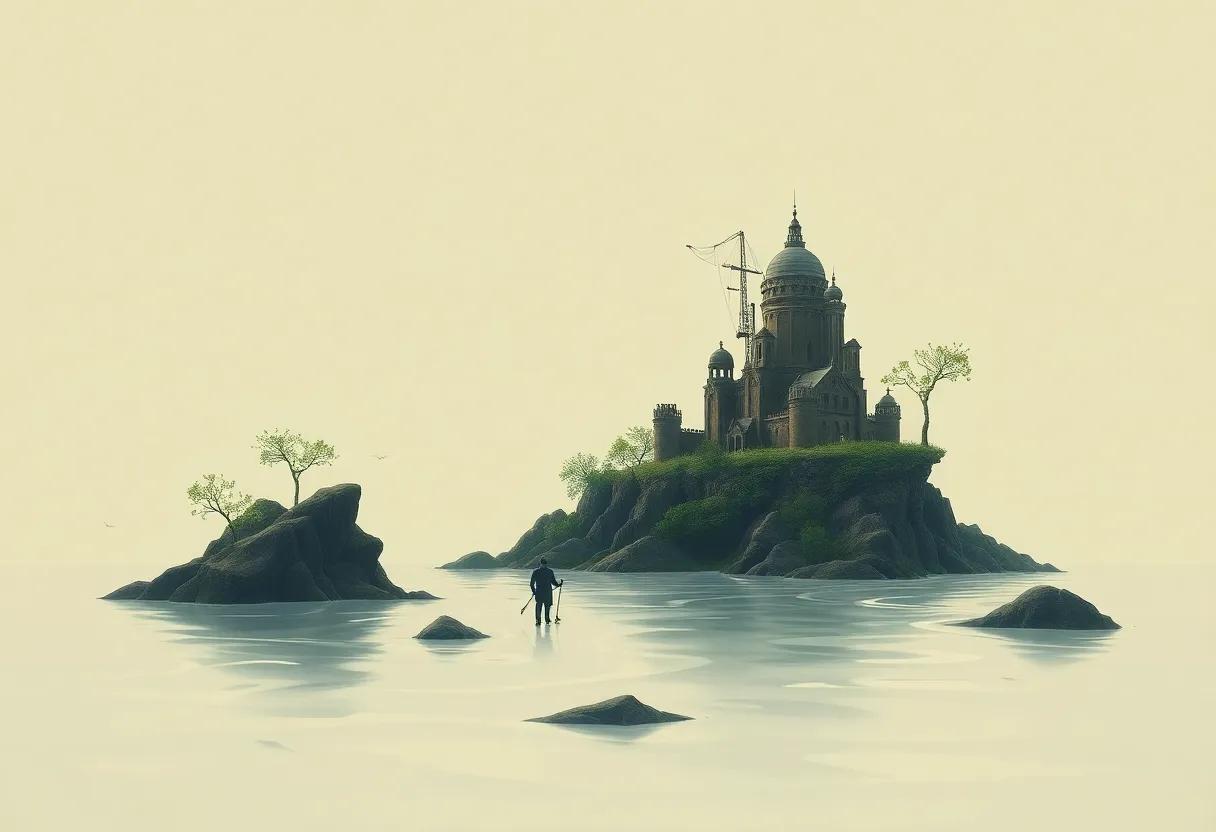
At the heart of the narrative lies a labyrinth of ethical quandaries that challenge both Victorian and contemporary boundaries of scientific exploration.Dr. Moreau’s experiments, which disturbingly blur the line between human and animal, force readers to confront uncomfortable questions about the limits of human intervention in nature. The notion of “playing god” resonates deeply as the novel probes the consequences of tampering with life’s essential laws, raising concerns still fiercely debated today: What responsibilities do scientists bear when pushing the envelope of what is biologically possible?
- The manipulation of genetic identity and its ramifications on dignity and autonomy
- the moral status of created beings and their rights-or lack thereof
- The potential abuse of power inherent in unchecked scientific ambition
These questions echo modern challenges in fields like genetic engineering, cloning, and AI ethics. Just as Moreau’s experiments resulted in physical and psychological monstrosities, contemporary debates grapple with unintended consequences lurking beneath groundbreaking innovations. The story functions as both a warning and a mirror, reflecting society’s ongoing struggle to balance innovation with compassion and duty. Below is a simple comparison highlighting parallels between Wells’ fictional ethics and today’s real-world dilemmas:
| Ethical Issue | The Island of Dr. Moreau | Modern Scientific Debates |
|---|---|---|
| Creation of New Life Forms | Human-animal hybrids forced into submission | CRISPR, synthetic biology, de-extinction efforts |
| Subject Consent | Subjects incapable of consent, suffering silently | Debates on lab-grown meat, organoids, AI consciousness |
| Scientific Hubris | ignoring moral limits for personal ambitions | Ethical guidelines vs. rapid tech advancement |
Analyzing the Complex Portrayal of Monstrosity and Humanity in Wells’ Exploration of Moral Boundaries and Identity
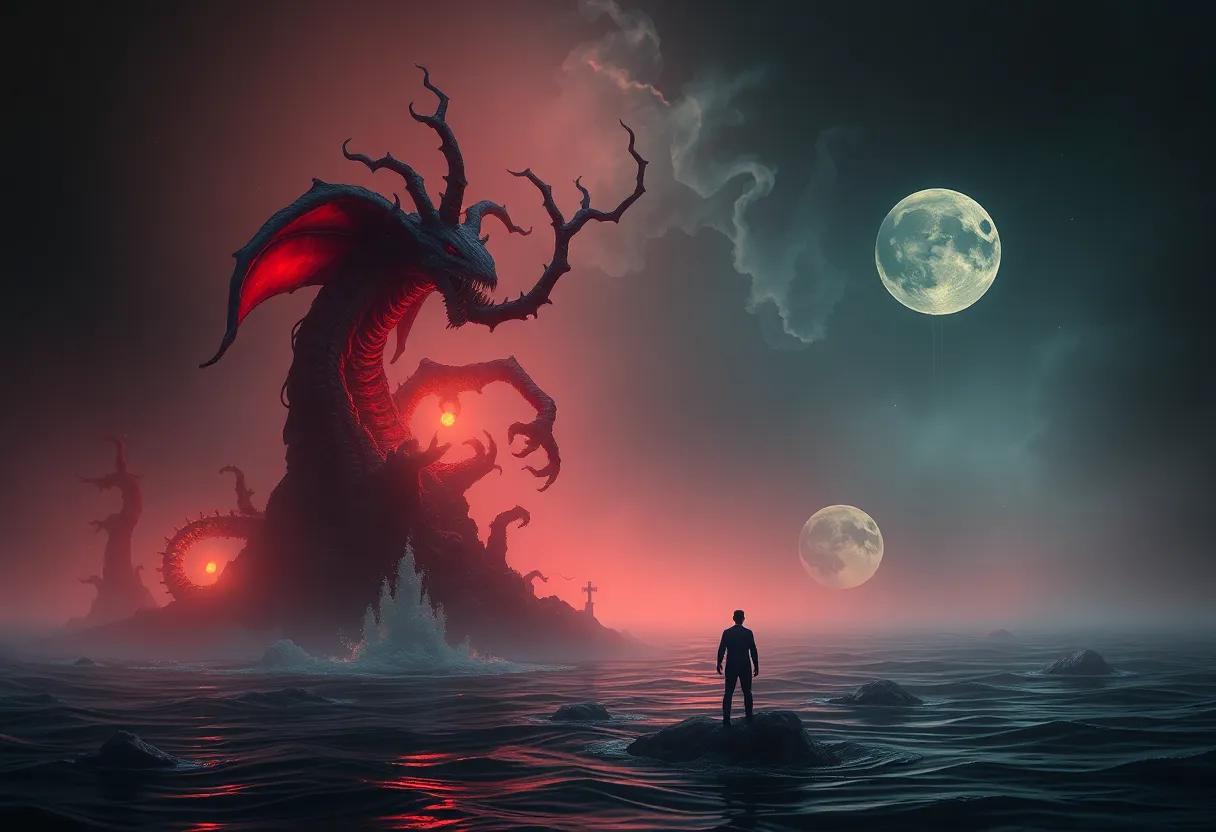
Wells masterfully blurs the lines between monstrosity and humanity, challenging readers to reconsider the rigid definitions society often imposes. Through the grotesque experiments of Dr. Moreau, the novel raises critical questions about what it truly means to be human. Are physical form and anatomical structure definitive boundaries, or do the creatures’ gradual shifts in behavior and self-awareness suggest a more complex spectrum of identity? The unsettling fusion of beast and human traits compels us to confront the ethical ambiguity surrounding scientific progress and its potential to erode moral boundaries.
Integral to this exploration is Wells’ nuanced characterization, which offers no easy condemnation or heroism but rather a tangled web of conflicting motives and blurred identities. The island’s hybrid inhabitants embody a liminal state where instincts, social conditioning, and suffering intertwine, prompting reflection on the nature of consciousness itself. Key themes emerge:
- Identity as performance: the creatures mimic human behaviors to assert belonging, yet are haunted by animalistic impulses.
- Moral consequence of creation: Moreau’s godlike manipulations question the responsibility borne by creators.
- The fragility of civilization: social order teeters on the edge, sustained only through coercion and denial of innate urges.
| Aspect | Monstrosity | Humanity |
|---|---|---|
| Physical Traits | Hybrid forms, animalistic features | Upright posture, speech |
| Behavioral Traits | Instinct-driven, violent impulses | Reason, empathy, social ritual |
| Moral Standing | Unlawful, governed by pain | Bound by law and conscience |
| Self-Perception | Conflicted, fragmented | Coherent, identity-aware |
The Role of Isolation and Environment in Shaping the Novel’s Philosophical and Ethical Themes with Visual symbolism
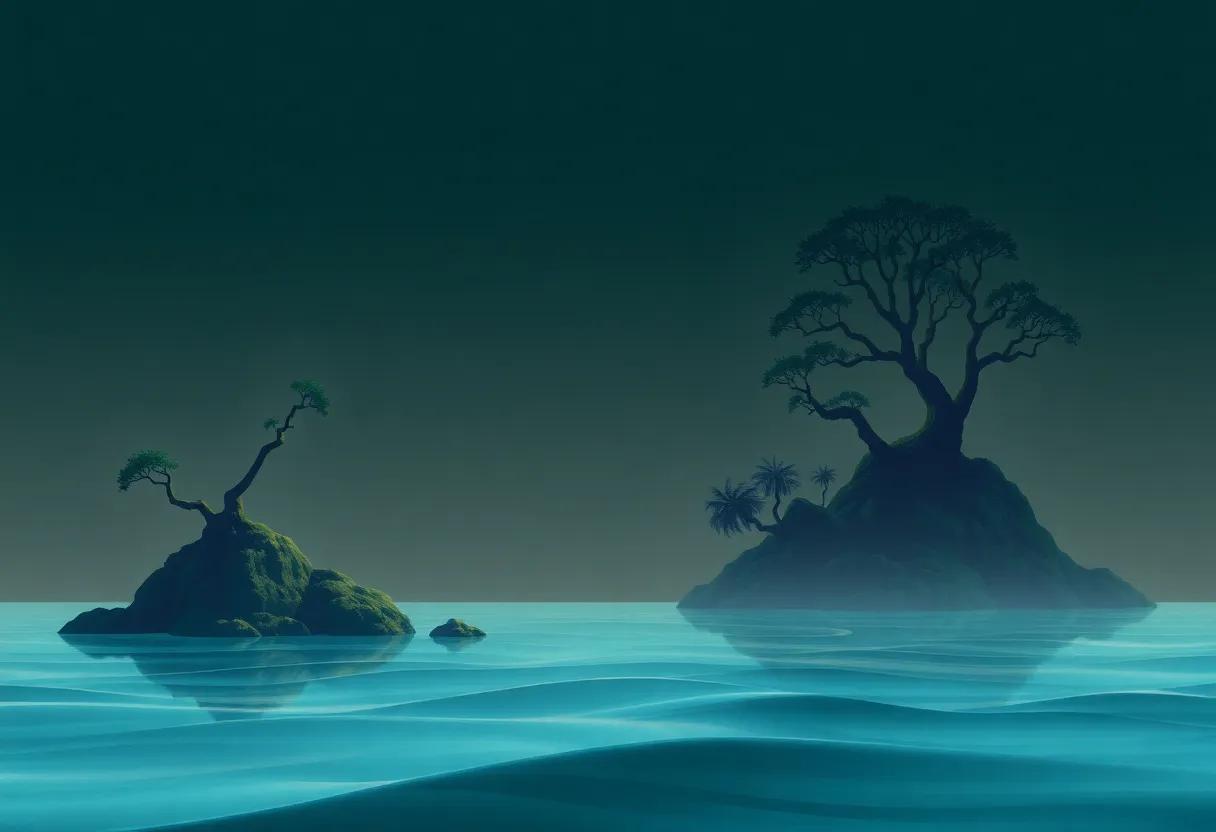
In The Island of Dr. Moreau, isolation acts as both a physical and psychological crucible, forcing characters-and readers-to confront the blurred boundaries between humanity and monstrosity. The island itself becomes a microcosm, removed from societal norms, where ethical codes are suspended and reconstructed through Dr. Moreau’s disturbing experiments.This seclusion magnifies existential questions: Can morality persist without community, or is it inherently tied to social constructs? The environment, shrouded in dense jungles and ominous shadows, mirrors the murky ethical terrain, creating a visceral sense of alienation that challenges the presumed order of natural law.
Visual symbolism enhances this exploration, with recurring motifs such as cages, animalistic features, and the stark contrasts between light and darkness serving as metaphors for the fragile divide between civilization and savagery. Consider the table below, which outlines key environmental elements alongside their symbolic significance in the narrative:
| Environmental Element | Symbolic Meaning | Philosophical Implication |
|---|---|---|
| Dense Jungle | Unknown chaos | Primal instincts vs. rational control |
| Isolation of the Island | Detachment from society | Ethics without societal constraints |
| Dr.Moreau’s Laboratory | Hub of artificial creation | Man’s godlike power and moral hubris |
| Cages and Fences | Boundaries of humanity | Struggle for identity and self-control |
- The environment functions not merely as backdrop but as an active participant shaping the ethical dilemmas.
- Isolation intensifies internal conflicts, exposing the raw tension between nature and nurture.
- Symbolism embedded in the surroundings reinforces the fluidity of identity and morality.
How Wells Uses Gothic Elements and Scientific imagination to Challenge Victorian Era Norms and Ethical Perspectives
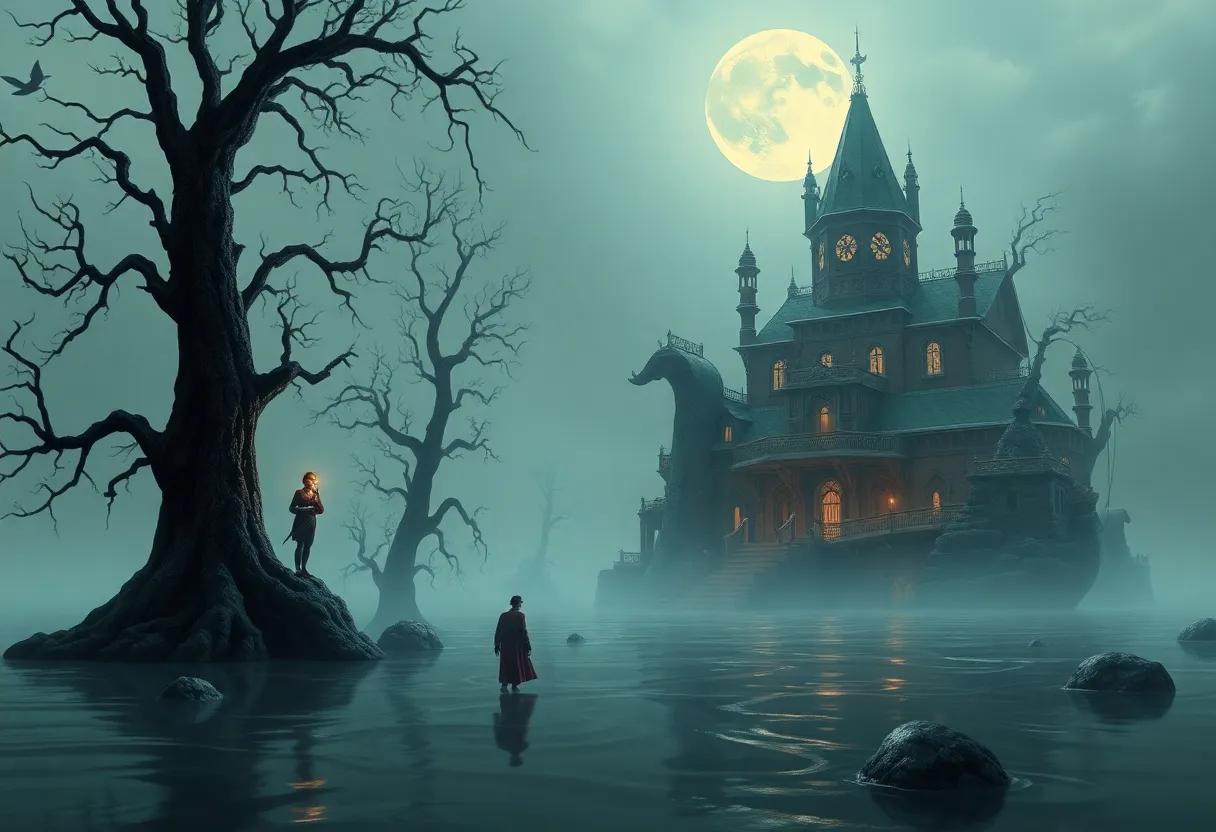
H.G. Wells masterfully entwines gothic motifs with imaginative scientific speculation to unsettle the certainties of Victorian society. The eerie island, shrouded in mist and moral ambiguity, evokes classic gothic atmospheres – isolation, decay, and transgression – which Wells harnesses to amplify the horror of unchecked scientific ambition. By populating his narrative with grotesque hybrid creatures, he not only challenges the natural order but also forces readers to confront the ethical implications of playing god. This unsettling blend underscores the Victorian anxieties surrounding progress, morality, and the boundaries of human knowledge.
Wells’ use of scientific imagination serves as a double-edged sword, together evoking fascination and repulsion. His experiments blur lines between species, identity, and ethics, provoking critical questions such as:
- What defines humanity?
- Are moral considerations applicable to new forms of life?
- How far should science intrude upon nature’s domain?
Through this fantastical lens, Wells critiques the Victorian faith in progress as inherently good, exposing the era’s blind spots and limitations. His narrative acts not simply as a cautionary tale but a complex dialog about power, responsibility, and the monstrous potential lurking in unchecked experimentation.
| Victorian Norm | Wells’ Challenge | Gothic Device |
|---|---|---|
| Strict class & species hierarchies | Blurring lines between man and beast | Grotesque hybrids |
| Faith in moral absolutism | Ethical ambiguity of scientific creation | Dark, isolated setting |
| Progress as unequivocal good | Dangers of unchecked experimentation | Atmosphere of decay and dread |
A Close Reading of the Character Development and Their Symbolic Representation of Ethical Conflicts in the Story
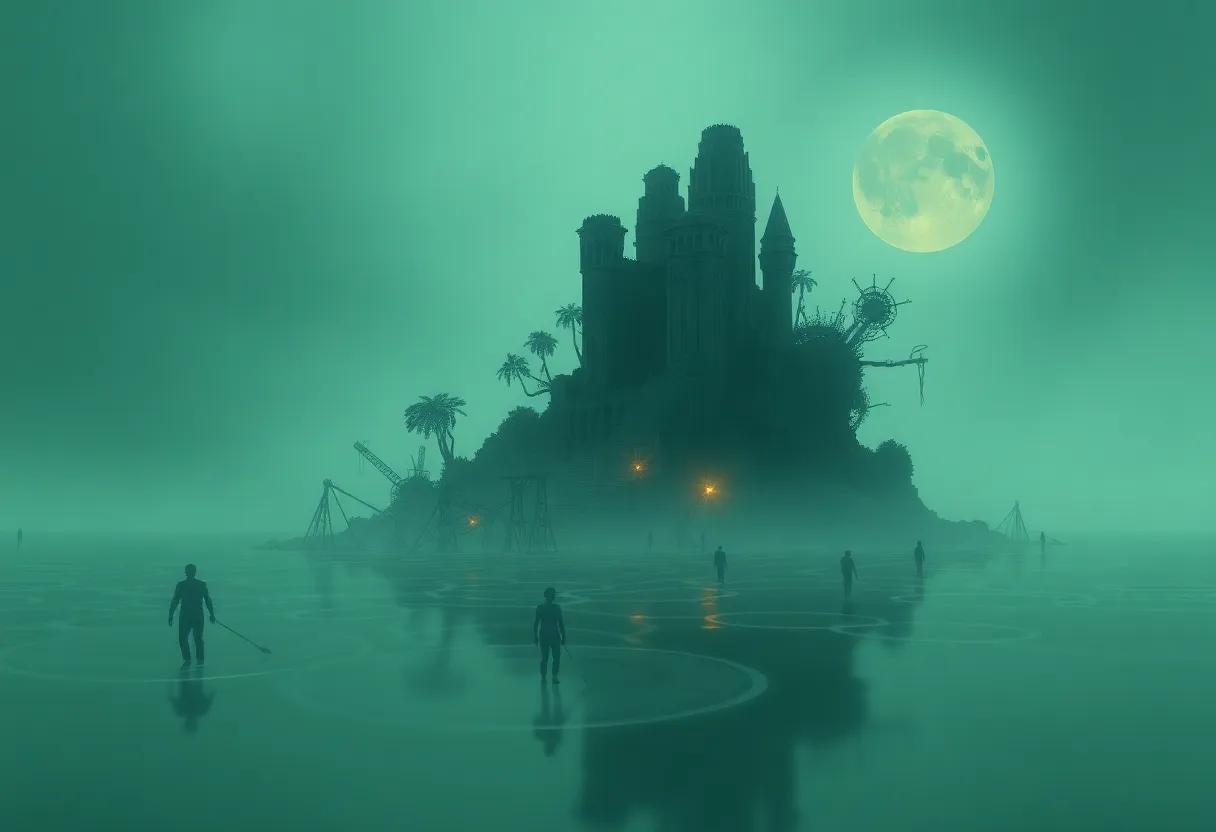
Wells masterfully crafts his characters not merely as individuals but as embodiments of larger ethical dilemmas, each grappling with the consequences of unchecked scientific ambition. Dr. Moreau himself symbolizes the dangerous allure of playing god,his cold detachment and relentless pursuit of “humanizing” beasts raising questions about morality and the limits of human intervention. In contrast, the creatures-hybrids torn between instinct and imposed civility-represent the fractured nature of identity and conscience. Their agonizing struggle highlights the ethical conflict between natural law and artificial constraints, blurring the lines between victim and perpetrator.
The protagonist Edward Prendick serves as an audience surrogate, his evolving perspective forcing readers to confront uncomfortable contradictions within their own moral frameworks.The island’s inhabitants can be grouped as follows:
| Character Type | Symbolic Role | Ethical Conflict |
|---|---|---|
| Dr. Moreau | Man as Creator | The morality of transgressing natural boundaries |
| The beast-Men | Struggle for Humanity | Instinct versus imposed ethical codes |
| Prendick | Conscience & Observer | Humanity’s response to monstrous acts |
- Conflict of Control: The tension between domination and freedom, as experienced by the beast-men.
- Question of responsibility: Moreau’s disregard for the pain caused by his experiments.
- Moral Ambiguity: Prendick’s vacillating judgment reflecting the reader’s own ethical uncertainty.
Examining the Narrative Structure and Pacing as Tools to Heighten tension and Ethical Reflection in the Novel
H.G. Wells expertly manipulates the narrative structure of The Island of Dr. Moreau to immerse readers in an escalating atmosphere of unease. The story unfolds through the eyes of the shipwrecked protagonist, Edward Prendick, whose disoriented perspective mirrors the reader’s growing suspicion and horror.Wells employs a gradual layering of revelations-starting with seemingly innocuous observations that spiral into chilling discoveries about Moreau’s experiments. This slow drip of unsettling information is punctuated by abrupt shifts in tone, jarring the audience and mirroring Prendick’s own oscillations between curiosity and terror, creating a tension that feels both certain and suffocating.
Pacing is another critical tool Wells uses to provoke ethical reflection. Moments of frenetic action-like the villagers’ violent outbreaks or the chaotic penalties imposed by Moreau-are juxtaposed against prolonged, contemplative passages exploring the blurred boundary between man and beast. This contrast doesn’t just heighten suspense but invites readers to ponder the costs of scientific hubris and moral ambiguity. Below is a breakdown of how pacing alternates between these modes to serve the novel’s thematic core:
| Narrative Phase | Pacing style | Effect on Tension & Ethics |
|---|---|---|
| Discovery | slow, methodical | Builds curiosity and unease |
| Confrontation | Rapid, chaotic | Amplifies fear and moral questioning |
| Reflection | Measured, introspective | Encourages ethical contemplation |
- Fragmented narrative reinforces the thematic chaos wrought by Moreau’s experiments.
- Delayed exposition maintains suspense while nudging readers toward ethical dilemmas.
- Rhythmic pacing reflects the tension between order and monstrosity at the story’s heart.
The Impact of The Island of Dr Moreau on Contemporary Science Fiction and Ethical Discourse in Literature
H.G. Wells’ narrative has long rippled through the veins of contemporary science fiction, pioneering discussions on the blurred boundaries between humanity and monstrosity. The unsettling fusion of man and beast within the novel serves as a catalyst, urging modern writers and thinkers to interrogate not only biological ethics but also the consequences of unchecked scientific ambition. This story’s legacy is evident in works that explore bioengineering, artificial intelligence, and the moral frameworks governing these advancements. Such reflections challenge readers to confront uncomfortable questions about identity, autonomy, and the essence of what it means to be human in an era of rapid technological conversion.
Moreover, the novel’s ethical discourse resonates deeply within literary explorations of power, cruelty, and responsibility. It foregrounds key themes that persist in frameworks analyzing medical ethics, animal rights, and bioethics today. The ambiguous morality of Dr. Moreau’s experiments pushes audiences to reevaluate the price of progress and the often ignored victims of innovation. Key elements driving this discourse include:
- The blurred line between creator and creation – questioning authority and consequence
- The nature of suffering and consent – ethics in scientific experimentation
- The embodiment of monstrosity - internal versus external transformation
| aspect | Contemporary Reflection |
|---|---|
| Ethical Boundaries | genetic modification debates, AI Personhood |
| Human Identity | Posthumanism, Transhumanism discourse |
| Moral Consequences | Ethics in experimentation and power misuse |
Recommendations for Readers Interested in Bioethics and Horror Through the Lens of Wells’ Provocative Storytelling
For enthusiasts eager to delve into the complex intersection of ethical quandaries and eerie narratives, Wells’ work serves as an essential gateway. His portrayal of Dr. Moreau’s tragic experiments invites readers to confront uncomfortable questions surrounding the limits of scientific ambition and the nature of humanity. To enrich your exploration,consider works that similarly blur the lines between morality and monstrosity,including:
- Mary Shelley’s Frankenstein – an enduring meditation on creation,responsibility,and alienation.
- Octavia E. Butler’s Fledgling - a contemporary reimagining of identity, power, and ethics in a vampiric context.
- Jeff VanderMeer’s Annihilation – a vivid exploration of ecological transformation and human hubris through unsettling horror.
| recommended Reading | Central Themes | Why it Resonates |
|---|---|---|
| The Strange Case of Dr. Jekyll and Mr. Hyde Robert Louis stevenson |
Duality of Human Nature, Science & Ethics | Examines morality through the lens of inner monstrosity, mirroring Wells’ ethical tensions. |
| Never Let Me Go Kazuo Ishiguro |
Bioethics, Personhood, Dystopia | Offers a haunting glimpse into bioethical dilemmas, focusing on the humanity of the created. |
| The ballad of Black Tom Victor LaValle |
Racial Horror, Cosmic Entities, Ethical Ambiguity | Challenges horror tropes while integrating ethical and societal critique, much like Wells’ subversions. |
Visualizing the Ethical Landscape and Monstrous Imagery for a Compelling AI Interpretation Based on Wells’ Themes
the ethical tensions in The Island of Dr. Moreau come alive through striking visual juxtapositions that echo Wells’ haunting questions about humanity and monstrosity. Imagery depicting the blurred lines between man and beast forces us to confront uncomfortable moral dilemmas: What defines personhood? Is the pursuit of scientific progress justified when it tamper with nature’s boundaries? Portraying the vivisections, the painful transformations, and the anguished faces of Moreau’s creations, an AI interpretation can encapsulate the visceral horror and tragic empathy woven tightly into Wells’ narrative. Contrast and ambiguity become powerful tools-shadowy figures half-emerged from primal wilderness, cages that double as cages of conscience, and the eerie presence of the “beast Folk” caught between two worlds.
- Symbolism: Animalistic features fused with human traits symbolize ethical decay and blurred identity.
- Color palette: Muted earth tones contrasted with unnatural highlights to evoke unease and artificiality.
- Spatial design: Claustrophobic enclosures versus the untamed island wilderness to depict physical and moral confinement.
| Visual Element | Ethical Implication | AI Interpretation |
|---|---|---|
| The Beast Folk’s Eyes | Suggest blurred consciousness and lost identity | Animating eyes with shifting human-animal expressions |
| Dr. Moreau’s Lab | Monument to dangerous hubris | Mechanical and organic textures merging unnervingly |
| Broken Chains | Symbol of fractured morality and failed control | Shattered links with organic growths entwining metal |
The Enduring Legacy of H G Wells as a Pioneer in Blending Science, Philosophy, and Storytelling in Thought-Provoking Fiction
H.G. Wells occupies a unique space in literary history, seamlessly fusing rigorous scientific insight with profound philosophical inquiry and compelling storytelling. His ability to navigate the intricate relationship between human advancement and ethical boundaries remains unparalleled. In the Island of Dr. Moreau, Wells challenges readers to confront uncomfortable questions about the nature of humanity, the limits of scientific experimentation, and the moral dilemmas that accompany playing god. This narrative does not merely entertain but provokes reflection on the consequences of unchecked ambition and the fragile line separating man from beast.
Wells’ genius is encapsulated in his deft use of speculative fiction as a vessel for societal critique.The grotesque transformations on the island provoke readers to examine notions such as:
- The ethics of scientific manipulation – At what cost does progress come?
- The construction of identity and monstrosity – Who defines what it means to be human?
- Power dynamics and control – How does domination distort nature and morality?
| Element | Significance |
|---|---|
| Dr. Moreau | Embodiment of scientific hubris and moral ambiguity |
| The Beast Folk | Symbolize blurred boundaries between human and animal instincts |
| The Island | Microcosm of isolated ethical experimentation |
In the final analysis, The Island of Dr. Moreau remains a haunting journey into the shadows where science, morality, and monstrosity collide. H.G. Wells challenges readers to confront uncomfortable questions about humanity’s limits and the ethical boundaries we dare-or refuse-to cross. This exploration of ethics wrapped in eerie imagination invites us not only to ponder the nature of monstrosity but to reflect on the humanity lurking within ourselves. Whether viewed as cautionary tale or speculative inquiry, Wells’ narrative endures, reminding us that the line between man and monster is often drawn in the shifting sands of conscience.

